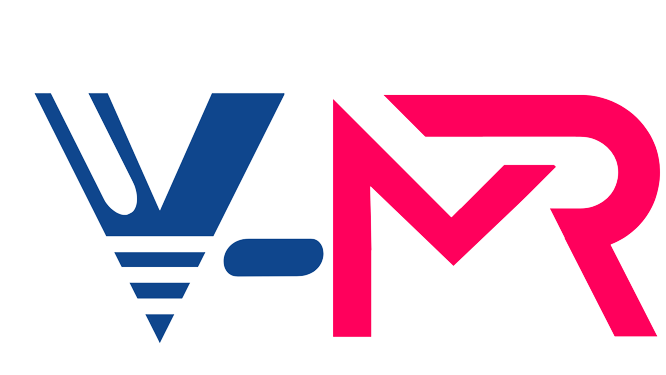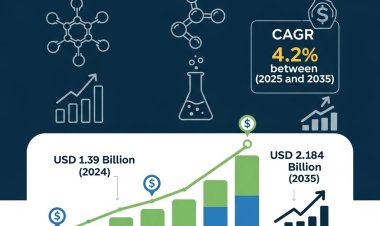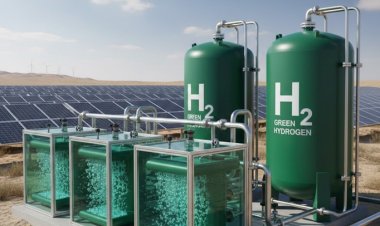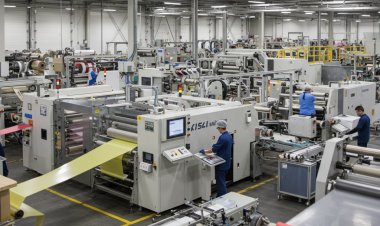Global Ballast Water Treatment System Market Size to Reach $12.2 Billion at a CAGR of 10.4% by 2030
Vantage Market Research expects the Ballast Water Treatment System Market to reach USD 12.2 Billion by 2030, exhibiting a growth rate (CAGR) of 10.4% during 2023-2030.
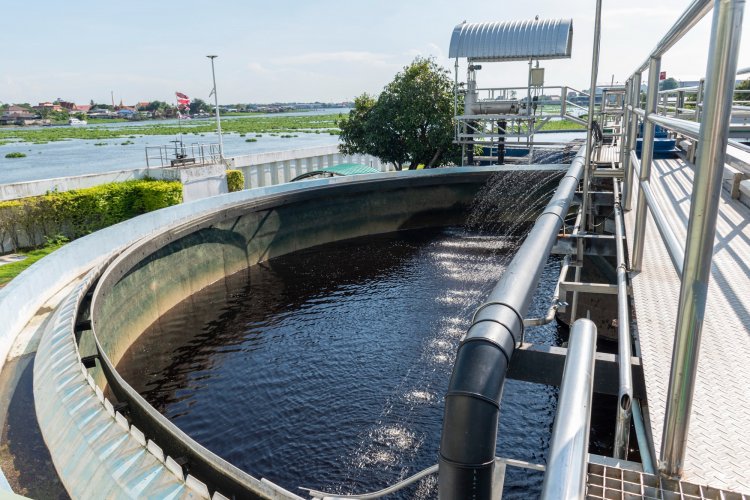
The Global Ballast Water Treatment System Market size reached USD 5.56 Billion in 2022. Vantage Market Research expects the market to reach USD 12.2 Billion by 2030, exhibiting a growth rate (CAGR) of 10.4% during 2023-2030.
Table Of Content [TOC]
|
1. Introduction |
|
|
|
|
2. The International Maritime Organisation (IMO) and Ballast Water Management (BWM) Convention |
|
|
|
|
3. Complex Market Structure and Key Players |
|
|
|
|
4. Technological Innovations in Ballast Water Treatment Systems |
|
|
|
|
|
|
|
|
|
|
5. Challenges and Opportunities in the Market |
|
|
|
|
|
|
|
|
|
6. Conclusion |
|
|
|
Navigating the Waves of the Ballast Water Treatment Systems Market
The shipping sector is crucial to international trade linking countries and promoting economic development. Ballast water is meant to stabilize ships, but its unforeseen effects have wreaked havoc on marine ecosystems. The market for Ballast Water Treatment Systems has evolved as a crucial industry in response to this problem, trying to stop the spread of exotic species and protect our seas. In this blog, we'll delve deep into this market to examine its development, difficulties, and potential.
Request Sample Report of Ballast Water Treatment System Market @ https://www.vantagemarketresearch.com/ballast-water-treatment-system-market-2208/request-sample
Top Companies in Global Ballast Water Treatment System Market
- Alfa Laval (Sweden)
- Panasia (South Korea)
- OceanSaver (UK)
- Qingdao Sunrui (China)
- JFE Engineering (Japan)
- Qingdao Headway Technology (China)
- Optimarin (Norway)
- Hyde Marine (U.S.)
- Veolia Water Technologies (France)
- Techcross (South Korea)
- Siemens (Germany)
The International Maritime Organisation (IMO) developed the Ballast Water Management (BWM) Convention, which acts as a compass for the market's expansion. The agreement, which has 91 contracting states and represents 92% of the world's merchant fleet, establishes requirements for the treatment of ballast water and requires shipowners and operators to install efficient treatment equipment. The demand for Ballast Water Treatment Systems is driven by compliance with regulatory standards.
The market for Ballast Water Treatment Systems has a complex and dispersed structure. Significant market share is held by multinational businesses including Alfa Laval, Wärtsilä, and Xylem. They have a competitive advantage thanks to their well-known brand reputation and large distribution networks. However, the market also accepts small and medium-sized businesses that provide cutting-edge solutions and specialized technologies. This fragmentation increases competition, advances in technology, and gives customers with different demands options.
Technological Innovations
Technology developments have been a major factor in the market for Ballast Water Treatment Systems. Here are three crucial areas where there has been tremendous development:
- Modernised Treatment Methods: Innovative treatment technologies have emerged on the market that provides effective and eco-friendly solutions. The use of ultraviolet (UV) radiation is one such breakthrough. Ballast water is disinfected by UV-based devices, which successfully eliminate hazardous organisms without the use of chemicals. Due to this technology's great efficacy, small size, and simplicity of use, it has grown in popularity. Improvements in electrochlorination systems, which produce chlorine-based disinfectants onboard ships, have also improved treatment effectiveness and decreased the system's environmental impact.
- Integration of Automation and Monitoring: Automation and monitoring systems have been integrated into Ballast Water Treatment Systems, increasing the efficiency and dependability of these systems. Real-time monitoring and exact control of the treatment process are made possible by the integration of sensors, control systems, and cutting-edge algorithms. This makes it possible for treatment parameters to be automatically adjusted based on water quality and flow rate, assuring peak performance.
- Advanced and Hybrid Oxidation Processes: Hybrid treatment systems integrate several different technologies to improve the overall efficacy and efficiency of ballast water treatment. These systems frequently incorporate advanced oxidation processes (AOPs), electrochlorination, filtration, and UV radiation. AOPs use strong oxidants like ozone or hydrogen peroxide to destroy organic substances and tenacious, difficult-to-treat organisms.
Buy Now Our Ballast Water Treatment System Industry Report @ https://www.vantagemarketresearch.com/buy-now/ballast-water-treatment-system-market-2208/0
Challenges and Opportunities
The market for Ballast Water Treatment Systems has both opportunities and challenges as it works to satisfy legal requirements and address the effects of ballast water on marine ecosystems.
Regulatory Compliance issues: Ensuring regulatory compliance is one of the key market issues. The Bilge Water Management Convention of the International Maritime Organisation specifies rules and procedures for treating bilge water to stop the spread of invasive species. For shipowners and operators, however, observing these laws can be challenging and expensive. Significant obstacles exist in retrofitting vessels with acceptable treatment systems, assuring their effective operation, and achieving regulatory requirements. The complexity is further increased by the shipping industry's diversity, which includes boats with a range of sizes, ages, and operational profiles.
Market expansion and Expansion: Businesses in the Ballast Water Treatment Systems industry have opportunities due to the market's potential for expansion. The demand for treatment systems is anticipated to increase dramatically as the BWM Convention deadline draws near. As a result, there are now chances for both established firms and fresh competitors to gain market share and diversify their product offers. Furthermore, the market's fragmentation makes it possible for specialized technologies and niche solutions to prosper. In this expanding sector, businesses have a chance to succeed by offering treatment systems that are affordable, dependable, and environmentally friendly.
Conclusion
The market will continue to evolve as we sail towards a cleaner and more responsible maritime industry driven by the need to preserve our oceans and ensure a sustainable future for future generations. The Ballast Water Treatment Systems market is at the forefront of environmental protection and sustainable shipping practices. With strong regulatory frameworks, technological advancements, and a diverse competitive landscape, the industry is poised for further growth.
Frequently Asked Question (FAQ) - Ballast Water Treatment System Market
- What is a Ballast Water Treatment System (BWTS)?
- A Ballast Water Treatment System is a technology designed to treat ballast water onboard ships to eliminate or neutralize harmful organisms, bacteria, and pathogens present in the water. It helps prevent the spread of invasive species between different marine environments.
- Why is the Ballast Water Treatment System Market important?
- The Ballast Water Treatment System Market is crucial in ensuring compliance with international regulations set by organizations like the International Maritime Organization (IMO). These regulations aim to protect marine ecosystems from the negative impacts of ballast water discharge and foster sustainable shipping practices.
- What are the key driving factors behind the growth of the Ballast Water Treatment System Market?
- The primary drivers of market growth include the need to meet regulatory compliance, rising concerns over marine ecosystem preservation, increasing global trade, and advancements in ballast water treatment technologies.
- Which organizations regulate the Ballast Water Treatment System Market?
- The International Maritime Organization (IMO) plays a significant role in regulating the Ballast Water Treatment System Market through the Ballast Water Management (BWM) Convention. The BWM Convention sets guidelines for ballast water treatment and equipment installation.
- Who are the major players in the Ballast Water Treatment System Market?
- The market is characterized by both multinational corporations and small to medium-sized companies. Major players include Alfa Laval, Wärtsilä, Xylem, and other companies offering specialized technologies and solutions.
- What are the different types of Ballast Water Treatment Technologies available?
- There are several types of technologies used in Ballast Water Treatment Systems, including ultraviolet (UV) radiation, electrochlorination, advanced oxidation processes (AOPs), filtration, and hybrid systems that combine multiple technologies for enhanced efficacy.
- How do Ballast Water Treatment Systems comply with international regulations?
- Ballast Water Treatment Systems comply with international regulations by effectively treating ballast water to remove or neutralize harmful organisms. Compliance involves installing approved treatment equipment, monitoring and recording system performance, and ensuring the treatment meets required standards.
- What are the challenges faced by the Ballast Water Treatment System Market?
- Some challenges include the complexity of retrofitting existing vessels with treatment systems, ensuring continuous effective operation, addressing the diverse nature of the shipping industry, and managing the costs associated with compliance.
- What opportunities does the Ballast Water Treatment System Market offer?
- The market offers opportunities for companies to innovate and develop advanced treatment technologies, expand their product portfolios, gain market share as the BWM Convention deadline approaches, and provide affordable and eco-friendly solutions to shipowners.
- How is the Ballast Water Treatment System Market expected to evolve in the future?
- The market is expected to witness further growth as more countries ratify the BWM Convention and demand for treatment systems increases. Advancements in technology, competitive dynamics, and a focus on environmental protection will drive the market's evolution in the coming years.
Read Our Latest Press Release: Canned Alcoholic Beverages Market - In-depth Analysis
Contact us
Eric Kunz
6218 Georgia Avenue NW Ste 1 - 564
Washington DC 20011-5125
United States Tel: +1 202 380 9727
Email: [email protected]
Website: Vantage Market Research
